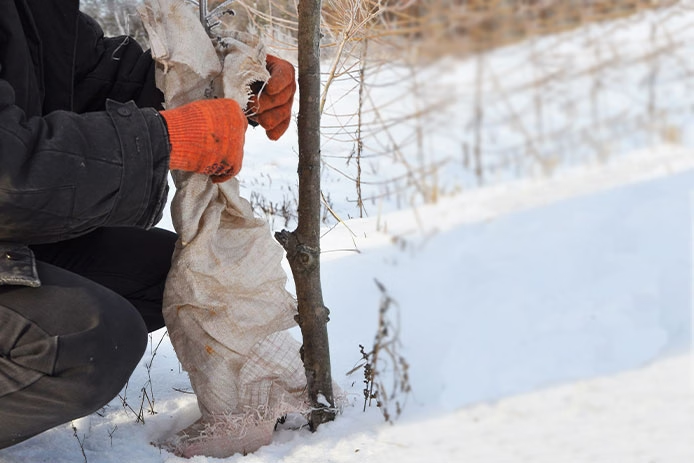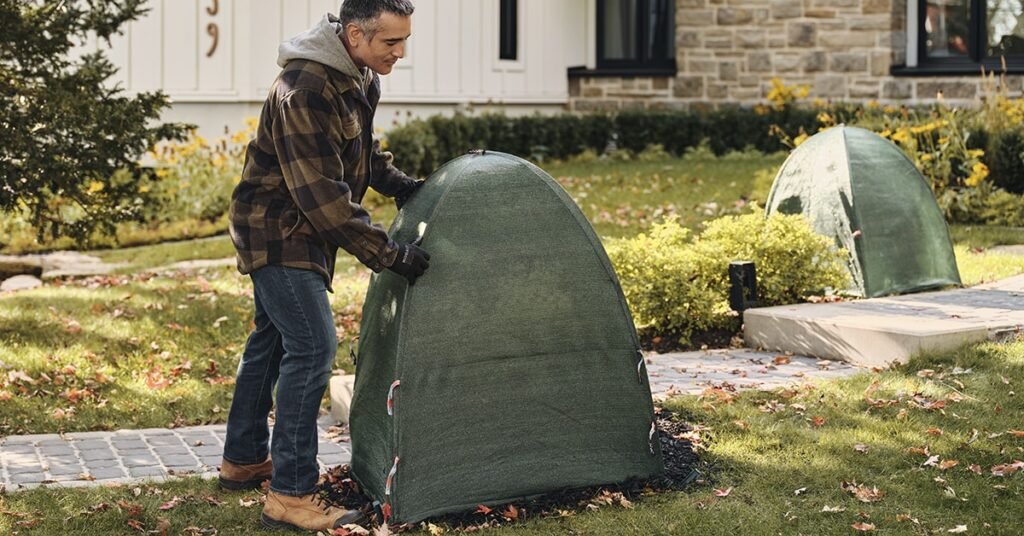Young trees, like all living organisms, go through vulnerable stages in their development. In the world of horticulture and forestry, the first few years after planting are the most critical. During this period, young trees establish their root systems, acclimate to their environment, and begin to build structural resilience. However, in colder climates, harsh winter winds pose one of the most serious threats to young saplings. Wind damage can lead to desiccation, broken branches, stunted growth, and even tree death.
Understanding how to protect young trees from winter winds is not only essential for gardeners and landscapers but also critical in environmental restoration projects, urban planning, and agriculture. This article offers a comprehensive exploration of why winter winds are harmful, how they affect young trees, and—most importantly—how to effectively protect trees through a combination of practical methods, materials, and long-term strategies.
Understanding the Threat of Winter Winds

1. Desiccation (Drying Out)
In winter, the ground may freeze, reducing a tree’s ability to take up water. At the same time, cold winds strip moisture from leaves and bark. Since young trees have underdeveloped root systems and thinner bark, they are particularly susceptible to winter desiccation, which can lead to:
- Browning and drying of foliage (especially evergreens)
- Cracking of bark (known as frost cracking)
- Dieback of branches and buds
2. Physical Damage
Strong winter winds can snap branches, bend trunks, or uproot shallow-rooted young trees. Trees in exposed or open landscapes, particularly newly planted ones, lack the structural integrity and anchoring of mature trees.
3. Frost Cracking and Sunscald
On cold, sunny winter days, a tree’s bark can heat unevenly, leading to sudden temperature fluctuations. When the sun disappears or the temperature drops rapidly, the bark can crack vertically, exposing the cambium layer and leaving the tree vulnerable to pests and diseases.
Signs of Winter Wind Damage in Young Trees

- Browning or yellowing needles (in conifers)
- Leaf scorch or curled leaves (in broadleaf evergreens)
- Vertical cracks in bark, especially on the southwest side
- Leaning or tilting trunk
- Dead buds and branch tips
- Wilting in early spring despite adequate watering
Protective Strategies for Young Trees
Effective protection of young trees against winter winds involves both preventive planting practices and seasonal protective measures. Below are strategies backed by horticultural research and field experience.
1. Choose the Right Location
Windbreak Planning:
Plant trees in areas shielded by natural windbreaks, such as:
- Fences
- Walls
- Shrubs
- Existing mature trees
When no natural windbreak exists, consider installing temporary artificial windbreaks made from burlap, snow fencing, or lattice panels.
Spacing Tip: Avoid planting trees in open, unprotected fields unless a windbreak is planned or nearby.
2. Staking and Anchoring

Why It’s Needed:
Young trees, especially those with bare roots or in windy areas, often require staking during their first 1–2 years. Staking helps them stay upright and develop a straight trunk while allowing limited flexibility to encourage strong root growth.
How to Stake Properly:
- Use two or three wooden or metal stakes placed outside the root ball
- Tie the trunk loosely with tree ties, soft cloth, or rubber strapping
- Avoid wire or anything that cuts into bark
- Remove stakes after one growing season to prevent girdling
3. Mulching
Benefits:
Mulch acts as a protective blanket for the tree’s roots, conserving moisture and regulating soil temperature. In winter, this is especially important when freeze-thaw cycles can stress young roots.
Best Practices:
- Apply 2–4 inches of organic mulch (wood chips, bark, straw) around the base
- Keep mulch 2–3 inches away from the trunk to prevent rot and rodent damage
- Extend mulch to the tree’s drip line, if possible
4. Burlap Wrapping and Tree Guards

Wrapping trees with burlap or using tree guards can protect against both desiccating winds and sunscald.
Burlap Screens:
- Erect burlap screens on the windward side (usually northwest)
- Use wooden stakes to secure a burlap or canvas barrier 6–12 inches away from the tree
- For evergreens, wrap the entire tree loosely in burlap if drying winds are extreme
Tree Guards:
- Spiral plastic or paper tree guards shield the trunk from:
- Sunscald
- Rodent damage
- Mechanical injury (from snow shovels or plows)
Install guards from the base up to the lowest branch and remove in spring to prevent moisture buildup and pest infestation.
5. Watering Before Winter
One of the best defenses against winter desiccation is ensuring that the tree enters dormancy with adequate moisture.
Watering Tips:
- Deeply water trees before the first hard frost (especially important for fall-planted trees)
- Avoid watering during freezing temperatures
- Use slow-drip irrigation or watering bags for optimal absorption
6. Antidesiccant Sprays (Optional for Evergreens)

Antidesiccants are waxy sprays applied to foliage that help reduce moisture loss.
Considerations:
- Use on broadleaf evergreens like boxwood, holly, or rhododendrons
- Apply on a dry day in late fall
- Reapply mid-winter if needed
Note: Antidesiccants are not suitable for all trees and may clog leaf pores if overused.
7. Snow Management and Ice Removal
Snow:
Light snow insulates roots, but heavy, wet snow can break branches. To protect:
- Gently brush snow off limbs with a broom (don’t shake them)
- Do not use salt near young trees—it can burn roots and foliage
Ice:
If ice coats branches, do not attempt to remove it manually. Let it melt naturally to avoid snapping brittle limbs.
8. Pruning Before Winter
Pruning helps trees develop a strong framework and eliminates damaged or weak limbs that might break under winter stress.
Winter Pruning Guidelines:
- Prune in late fall or early winter (after dormancy begins)
- Remove:
- Dead, diseased, or crossing branches
- Water sprouts and suckers
- Narrow crotches (which are prone to splitting)
Avoid heavy pruning right before frost, as it may stimulate tender new growth.
Long-Term Planning: Building Tree Resilience
Protecting young trees from winter winds is not just about temporary fixes. The goal is to build long-term resilience so that trees eventually withstand harsh winters unaided.
Recommendations:
- Choose hardy tree species suitable for your USDA zone
- Promote deep root growth with proper watering and spacing
- Monitor trees regularly for signs of stress or damage
- Educate local communities about winter tree care (especially in urban areas)
Conclusion
Young trees are the future backbone of our landscapes, forests, and ecosystems. Yet, during their early years, they are vulnerable—especially to the harsh and unforgiving winds of winter. From desiccation to frost cracks, the seasonal challenges are numerous, but not insurmountable.
By adopting a holistic and proactive approach—combining proper planting, staking, mulching, burlap wrapping, and watering—gardeners and land managers can ensure that young trees survive the winter and thrive for decades to come. Ultimately, protecting trees in winter is not just about safeguarding an investment; it’s about nurturing life in one of its most delicate stages.
